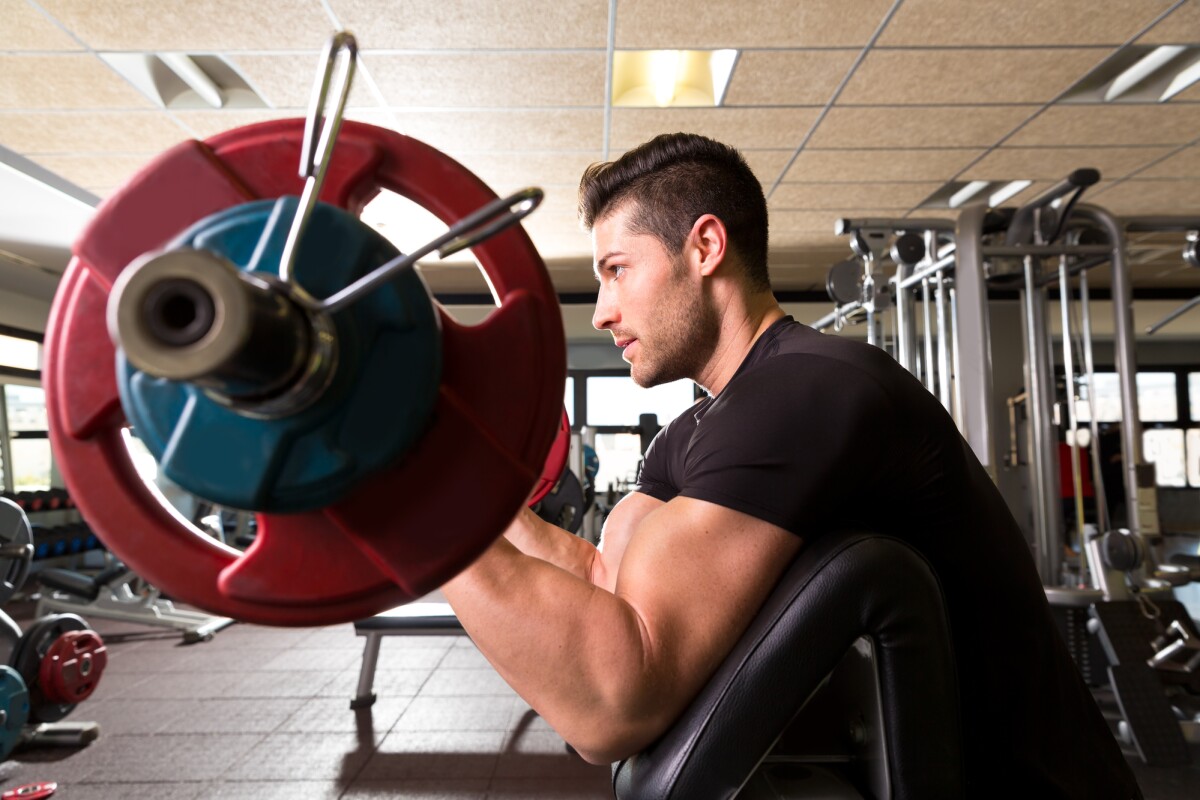
Just how do we rig our equipment is the big question. Our basic system usually isolates a muscle and then applies effort. Pretty easy to do but obviously limiting.
So just how do we lift a weight so that it may be properly lowered to optimal effect? We may be looking for a whole new training regime.
When i took up Qi gong practise with machines, we rigged up and just held the position for twenty minute units. Only later did i fully understand that all my muscles were engaged including my core zand that cheatring was impossible. The benefit is uniform muscle tone. This allows you to engage in a new effort without unwelcome stiffness.
My point is that thinking about all this does matter.
Do you even lift? Lowering weights may be faster route to muscle growth
By Nick Lavars
November 07, 2022
A new study suggests eccentric contractions may be a more efficient way to build muscle
https://newatlas.com/health-wellbeing/lift-lowering-weights-faster-route-muscle-growth/
Squeezing in a solid workout can be a challenge for time-poor fitness enthusiasts, but lately we’re seeing exercise scientists really drill into what the most efficient workouts might look like. A team at Australia’s Edith Cowan University (ECU) has offered new insights in this area, through a study demonstrating that a focus on lowering weights rather than lifting them may be a more efficient way to increase muscle mass.
Over the course of this year, the Edith Cowan University (ECU) researchers have made some interesting findings around weight training and how short and sharp workouts can still be very worthwhile. In February, the team showed that three-second dumbbell workouts each day can offer significant gains in strength, then in August they showed that lowering a dumbbell six times a day could offer the same kind of benefit.
These studies explored the types of muscle gains offered by different phases of weight training. The lifting phase shortens the muscle and is known as a concentric contraction, as occurs when a dumbbell is raised towards the shoulders in a bicep curl. An eccentric contraction is the opposite phase, the lowering of the weight back towards the hips, which lengthens the muscle.
Many forms of exercise, such as running and jumping, involve both eccentric and concentric contractions, with the two thought to play a complementary role in a healthy body. Concentric contractions can feel like harder work and require more energy at the time, but the muscles recover more quickly. Eccentric contractions, meanwhile, use less energy during the exercise but are believed to cause greater breakdown in muscle fiber and greater strength once they're rebuilt.
The previous findings from the ECU team fall into line with this school of thought by showing how eccentric contractions can lead to the greatest gains in strength, and the new study continues with this theme. The scientists enlisted 53 subjects who were placed in one of three exercise groups made to perform dumbbell curls twice a week for five weeks, and an inactive group serving as a control.
But only one of the groups performed both concentric and eccentric contractions, as you would during a typical bicep curl. Another group performed exclusively concentric contractions, and the other group performed only eccentric contractions. The scientists observed improvements in concentric strength in all groups, but the most interesting insight to result from the experiment was the superior gains seen in the eccentric-only group.
Despite them only lowering the weight and doing half the repetitions of the eccentric-concentric group, these subjects benefited from very similar gains in strength. Even more interesting is that this group exhibited greater increases in muscle thickness, of 7.2% compared to 5.4% seen in the concentric-eccentric group. Study author Professor Ken Nosaka tells New Atlas that those looking to put on size in the gym might do well to emphasize lowering weights, rather than lifting them.
“We can cut concentric contractions and we need to focus on eccentric contractions in our resistance training,” he explained. “Generally speaking, people focus on concentric rather than eccentric contractions, but this should be reconsidered.”
Nosaka offers a few examples of what this might look like in the home using bodyweight for resistance. You could sit down slowly in a chair from a half-squatting position, or slowly lower yourself into a lunge. When it comes to using weights for resistance, this begs the question of how you get them up there in the first place. For this, Nosaka also has some advice.
“In order to do eccentric contractions, we need to do concentric contractions (in order to lower a weight, we need to lift a weight first),” he told New Atlas. “It is important to note that concentric contractions induce greater neuromuscular fatigue than eccentric contractions. Thus, it is important to reduce effort for concentric contractions by using two arms to lift a weight, and lower it with one arm to emphasize eccentric contractions.”
One of the limitations of the study is that it focused exclusively on training the elbow flexor via bicep curls in untrained adults. While Nosaka believes the value of eccentric contractions is the same for muscle groups elsewhere in the body, further studies are needed to confirm this, and to explore whether the effects apply to a wider population and trained individuals.
The research was published in the European Journal of Applied Physiology.
No comments:
Post a Comment